Welcome to the February 2014 Berry Go Round Blog Carnival

February 2014
February’s Subject: Botanical Warfare: Parasites, Stranglers, Chemists, and Thieves
Plants often appear passive, but even a massive redwood began life down there in the duff scrambling for scarce resources. Fully grown, the trees must still defend against parasites and diseases. Many plants are aggressive predators and invaders, and all plants have traits that improve their chances for survival and reproduction. This month’s blog carnival posts offer examples. Go here for previous carnivals.
Natural processes underlie everything we see. Plant interactions are a treasure of evolutionary innovations in the search for sustenance.
Plants, have evolved traits that are often delightful, complex, and surprising. The most delightful are the sweet scents and colors that attract pollinators. More complex are the chemical signals that plants pass among themselves. Perhaps the most surprising are the mimicry solutions that some species use to win the competition for pollinators.
I have a soft spot for invasive plants and have written numerous articles about them. Some that cover desert invasions are on this blog. Mostly I’ve considered the human responsibility for spreading and encouraging invasive plants. In this Berry Go Round Carnival our interest is more in the mechanisms used by plants.
Let’s begin with Thomas Pickering’s Tropical Nursery Blog
Better than flypaper, two of the species Thomas describes not only catch insects with their sticky surfaces, they tidy up by digesting their captives.
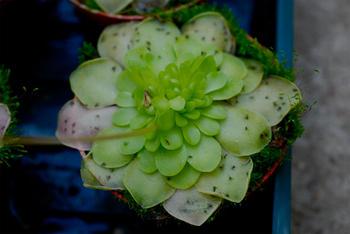
Pinguicula moranensis
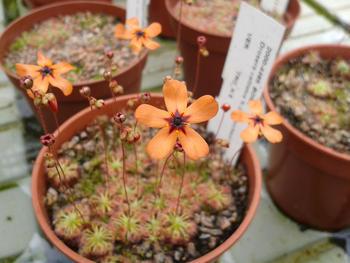
Drosera callistos
.
.
.
.
.
But perhaps the most unusual are the common Utricularia that add a lethal redefinition to a danger we all face: “being sucked in.”
Thomas has more, but let’s move on to Emma Cooper.
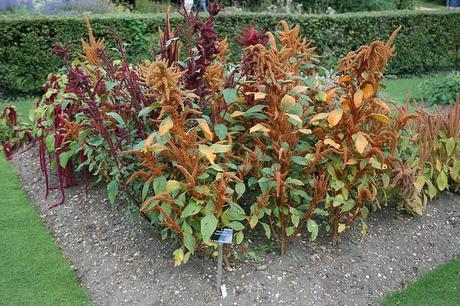
Amaranthus
Emma is a freelance writer and photographer who is an exceptional gardener. Her first book, ‘The Alternative Kitchen Garden: An A to Z‘, covers a range of topics from green gardening techniques to unusual edible plants. Emma’s post is about allelopathy, the chemical defense and offense systems employed by many plants. Some plants literally drip poison that blocks competitors and can even harm the skin as well as the mouths of animals.
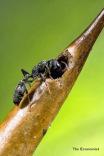 Hollis Marriott shows how the most sharply painful parts of plants can not only repel would-be consumers, they can let plant propagules hitch rides that get them to new habitats ahead of their competitors. They can also support a private SWAT team! Hollis serves up a fine example from an Acacia that hosts vicious ants.
Hollis Marriott shows how the most sharply painful parts of plants can not only repel would-be consumers, they can let plant propagules hitch rides that get them to new habitats ahead of their competitors. They can also support a private SWAT team! Hollis serves up a fine example from an Acacia that hosts vicious ants.
Emma Cooper also considers plant weaponry and differentiates the origin of spines, thorns, and prickles. She describes one particularly nasty defense that combines epidermal hairs and toxic chemicals, and another that involves armor formation using silica.
Johnna L Roose also writes about armor.
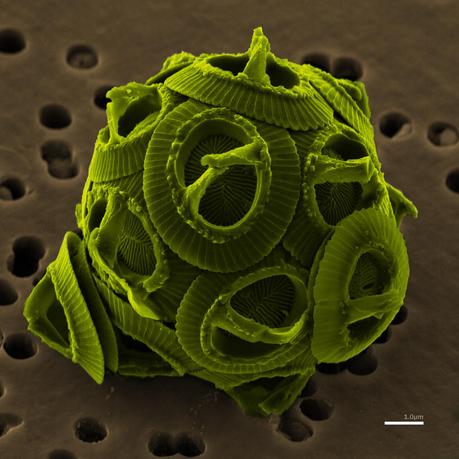
Gephyrocapsa oceanica Kamptner. Photo by NEON ja, colored by Richard Bartz
“Algae can be considered the lowest of the low, the most basal level of the ecosystem. Called pond scum and otherwise considered green and slimy, algae may hold a place at the bottom of the food chain, but it would be a mistake to think they were weak and defenseless. Some algae have elaborate coats of armor made of either calcite or silica to give them a rigid structure in their aquatic environment.”
.
.

Ambrosia deltoidea dominates the foreground.
I once analyzed the effects of above-ground plant competition for space. I worked with a small desert shrub, Ambrosia deltoidea that grows in pure stands in the Sonoran Desert. The interaction I found was strong enough to alter some of the basic assumptions about desert plant competition (J Arid Environments 17: 319-326). You can see above ground competition everywhere. Look closely at two trees rooted close together and you will see that their canopies grow apart. The smaller one usually does the most bending, and in other instances, you can see that species with sturdy branches bend the least. Bullies.
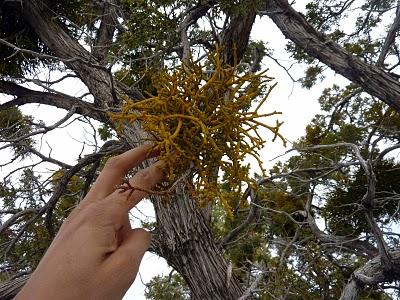
Mistletoe, probably Phoradendron juniperinum, in a juniper tree
Sarcozona gives us a look at mistletoe, a common plant parasite. Though mistletoe grows slowly and isn’t totally dependent on the host plant for sustenance, it can still weaken the host. If other problems such as drought or burrowing insects occur, the combination can be fatal. In general, however, mistletoe benefits ecosystems by providing food for birds and other wildlife groups. Of course, the tree might not consider this benefit at all important.

